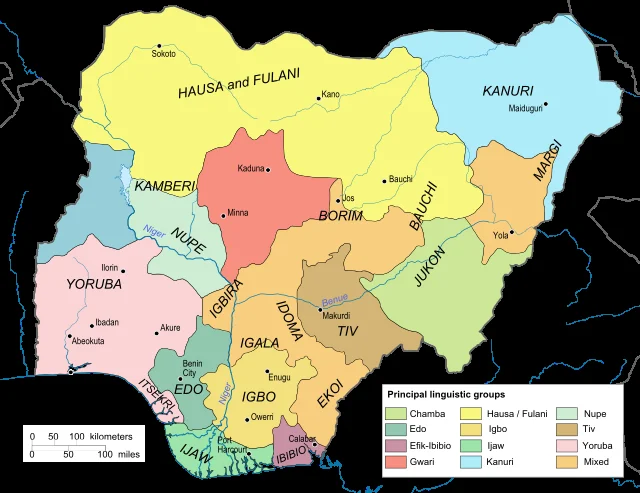The New Face of Control: How Nigeria Is Building a Digital Fortress
There’s a tendency to view state-level digital censorship as a crude instrument. A government, faced with dissent, panics and flips a switch, plunging the country into a temporary digital blackout. It’s reactive, messy, and often generates more international condemnation than it’s worth. But this view is becoming dangerously outdated. A more sophisticated model is emerging, one that’s less about flipping a switch and more about designing the entire electrical grid from the ground up.
My analysis suggests that Nigeria is becoming a primary case study in this new paradigm. The country isn’t just reacting to online movements; it is proactively building a domestic internet architecture designed for control. This isn't about simple repression. It's about constructing a digital fortress, brick by methodical brick, under the plausible banners of national security and economic development. The data points, when connected, reveal a clear and deliberate trajectory away from an open internet and toward a managed, state-influenced digital ecosystem.
The flashpoint, the event that appears to have accelerated this strategic shift, was the #EndSARS movement in 2020. The protests against police brutality were a masterclass in decentralized, social media-driven organization. For the Nigerian government, it was a systemic shock. It revealed a critical vulnerability: an information environment it could not directly command. The state's response was predictable, yet revealing.
On June 5, 2021, the government banned Twitter. The official justification, as stated by then-Information Minister Lai Mohammed, was the platform's "persistent use for activities that are capable of undermining Nigeria’s corporate existence." This is the kind of vague, national-security language common to authoritarian actions. But the ban itself wasn't the endgame. It was a signal of intent and, more importantly, a catalyst for seeking a more permanent solution. The ban lasted for months—to be more exact, 222 days—and during that period, something critical happened. Reports emerged that the Nigerian government had approached China, the global pioneer of state-controlled internet, to discuss building its own version of the "Great Firewall."
While concrete details on these talks remain opaque, the strategic logic is undeniable. Why play whack-a-mole with individual platforms when you can control the very infrastructure through which all data flows? A state-managed firewall is the architectural manifestation of digital sovereignty. It’s like owning the only bridge into a city; you no longer have to worry about who drives across, because you control the tollbooth, the traffic lanes, and the drawbridge itself. The goal shifts from censoring content to curating reality. What does it mean for a country of over 200 million people when the state can effectively decide which parts of the global internet are "acceptable" for public consumption?

The Trojan Horse of Modernization
The most insidious aspect of this strategy is that it’s being executed under the guise of progress. The construction of a digital fortress isn’t being sold as a project of repression. It’s being packaged within a much more palatable narrative: modernization and national development. This is where, from an analytical perspective, the strategy becomes dangerously effective.
African governments, including Nigeria's, are actively seeking foreign investment and expertise to build out their information and communications technology (ICT) infrastructure. This includes national broadband networks, fiber optic cables, and even "smart city" governance systems for hubs like Lagos. On the surface, these are unambiguously positive developments. Who could argue against faster, more reliable internet access or more efficient public services? I've looked at hundreds of these national tech rollouts, and the language is always the same—focused on connectivity, economic growth, and leapfrogging developmental stages.
The critical vulnerability, however, lies in the concept of "dual-use" technology. The same fiber optic network that delivers streaming video can be used to monitor data traffic. The same AI-powered surveillance cameras intended to reduce street crime (a legitimate concern) can be repurposed for facial recognition of political protestors. The infrastructure for development is, by its very nature, the infrastructure for surveillance.
This is where foreign suppliers enter the equation. States like China, Russia, Israel, and even Western nations like France and the US provide the technology, often motivated by a mix of economic profit and geopolitical influence. For Nigeria, this creates a buyer's market for the tools of control. A government official seeking to quell unrest doesn't need to invent the technology; they just need to sign a procurement contract. The boundary between development and security becomes intentionally blurred. Modernization becomes the vehicle for implementing systems of information control that would be politically untenable if proposed on their own.
The question then becomes one of methodology. How can we distinguish between legitimate infrastructure development and the deliberate assembly of a surveillance state? The answer lies in observing policy actions that run counter to the principles of an open internet. The Twitter ban was one data point. The proposed regulation of social media platforms is another. The justification from Nigerian officials—that online "lawlessness" must be managed just as street protests are—is perhaps the most telling indicator. It confirms that the state views the digital public square not as a forum for free expression, but as a territory to be policed. Nigeria’s government is using digital technology to repress citizens. A researcher explains how.
The Architecture of Control
Let's be clear. What we are witnessing in Nigeria is not a series of haphazard, reactive measures. It is the deliberate, strategic construction of a system. The government's actions post-#EndSARS indicate a fundamental realization: controlling the narrative in the 21st century requires controlling the digital infrastructure. The "development" initiatives provide the hardware, the legal and regulatory pushes provide the software, and the overarching goal is a state-managed internet where dissent can be throttled at the source. This isn't a slippery slope; it's a planned descent into a new kind of authoritarianism, one built with fiber optics and justified with the language of progress. The trajectory is set.
